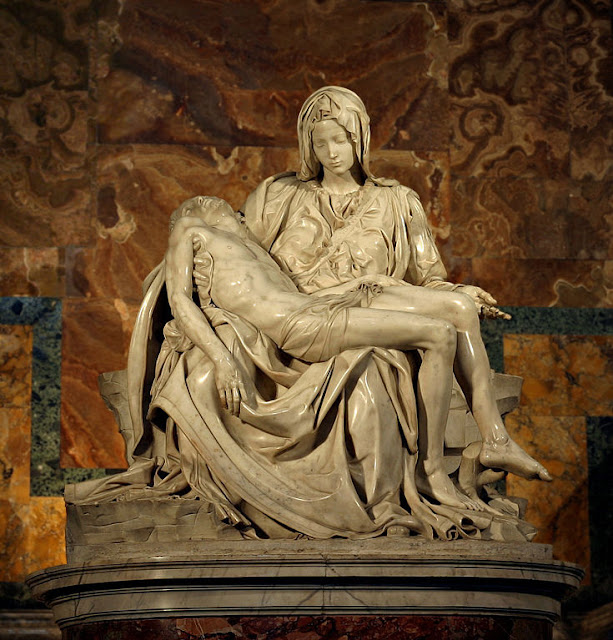Rood Screens at the Catholic Herald (UK)
 |
| The Victorian Web: image scanned by George P. Landow |
An excerpt from an article by Harry Mount at the Catholic Herald on rood screens, that also mentions a new book by Richard Hayman, available at the link below:
- - -
The screens – which divide chancel from nave, and were originally topped with a rood, the Anglo-Saxon word for a cross, with the crucified Christ flanked by Mary and John the Evangelist – are crucial to the layout of a church, to English church history and to the aesthetic understanding of our most important buildings, our parish churches. And Hayman, in his gentle, easy-going, unacademic prose, is the perfect rood-screen guide.
[...]
(P)lenty of pre-Reformation rood screens survive; the earliest, from the late 13th century, are at Stanton Harcourt, Oxfordshire, and Kirkstead, Lincolnshire. Most surviving screens are from the 15th and 16th centuries. In the remoter corners of the country, they were never touched. Thus the beautiful glut of them in Herefordshire and Monmouthshire – which has the best surviving screen, loft and tympanum in England or Wales, at Bettws Newydd.
Slowly, over the centuries since the Reformation, there has been a gathering interest in rood screens. In the 17th century, several new chancel screens were built, with the royal arms where the medieval rood would have been. Under the Victorians, there was plenty of cleaning and repainting of neglected, medieval screens. The greatest modern revival came under the sainted Sir Ninian Comper (1864-1960). I have made recent pilgrimages to his screens at St Mary the Virgin, Wellingborough, Northamptonshire, and Wimborne St Giles, Dorset. Both screens look like they were made yesterday – but they’re neither kitsch nor pastiche. They bring a rush to the heart; a momentary glimpse of all the gleaming splendour of the pre-Reformation parish church.
Read the full story at the link below:
The description from the Amazon page: Rood Screens (Shire Library) by Richard Hayman.
The rood screen was the visual focus of the medieval parish church, dividing the nave from the chancel. Most were built of wood and were adorned with intricate carved decoration painted in bright colours, often with images of saints. Defaced and often dismantled during the Reformation in the mid-sixteenth century, most surviving screens have been restored to their former glory since the nineteenth century and are now among the most prized treasures of our parish churches.
Article: The Rood Screen, Augustus Welby Northmore Pugin (1812-1852)
.jpg)





Comments
Post a Comment
Your comments will be appreciated and posted if 1) they are on topic and 2) preserve decorum.
Stand by your word.